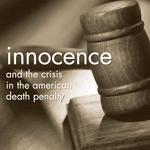Innocence and the Crisis in the American Death Penalty

Executive Summary Up
This report catalogs the emergence of innocence as the most important issue in the long-simmering death penalty debate. The sheer number of cases and the pervasive awareness of this trend in the public’s consciousness have changed the way capital punishment is perceived around the country. The steady evolution of this issue since the death penalty was reinstated in 1976 has been accelerated in recent years by the development of DNA technology, the new gold standard of forensic investigation. This science, along with a vigorous re-investigation of many cases, has led to the discovery of a growing number of tragic mistakes and freed inmates.
The evidence in this report presents a compelling case for many Americans that the risks associated with capital punishment exceed acceptable bounds. One hundred and sixteen people have been freed from death row after being cleared of their charges, including 16 people in the past 20 months. These inmates cumulatively spent over 1,000 years awaiting their freedom. The pace of exonerations has sharply increased, raising doubts about the reliability of the whole system.
This evidence has produced a dramatic reduction in the use of the death penalty as measured by the steep decline in death sentences around the country. Death sentences have dropped by 50% over the past 5 years. Nearly every state has experienced a significant reduction in death sentencing between the 1990s and the current decade. Many states are recording their lowest death sentencing rates in 30 years, and the number of inmates on death row has declined after steady increases for decades. Even executions have declined. And public support for the death penalty in opinion polls is significantly down from its high point in the 1990s.
But the official government response to the crisis of errors has been tepid at best. Most legislators lag behind the public in changing their perspective on this punishment. Only one state has an official moratorium on executions. Token reforms have been passed in some jurisdictions, but a thorough reinvestigation of the whole death penalty rationale and process has been avoided almost everywhere.
Ultimately, the issue of innocence, grounded in reports such as this, represents a crisis for the death penalty in America. The public’s tolerance for sacrificing innocent lives for the sake of maintaining a demonstrably unfair government program with questionable benefit to society is noticeably ebbing. New voices are emerging to challenge the death penalty: judges, law enforcement officials, conservative commentators, and some legislators are discarding the former polarization of the issue as one between criminals and victims. Instead, people are noting that the injustices are often perpetrated by those mantled with the public trust, and that the victims are sometimes those condemned to death.
This is not only a crisis of public confidence but one with constitutional dimensions as well. Some justices, in both legal opinions and public statements, are calling for a new legal analysis to address the challenges posed by so many mistakes in capital cases.
The death penalty may continue to decline in the U.S. Or it may, finally, be subjected to a more searching scrutiny. As examples in this report demonstrate, there is no shortage of proposals regarding the changes needed to secure a more reliable and just system. Yet, it is always easy for the next high-profile crime to overshadow the memory of so many past mistakes. Official inertia remains the biggest obstacle to change. But beyond reform, many are saying that it may be time to acknowledge that this experiment has run its course.

